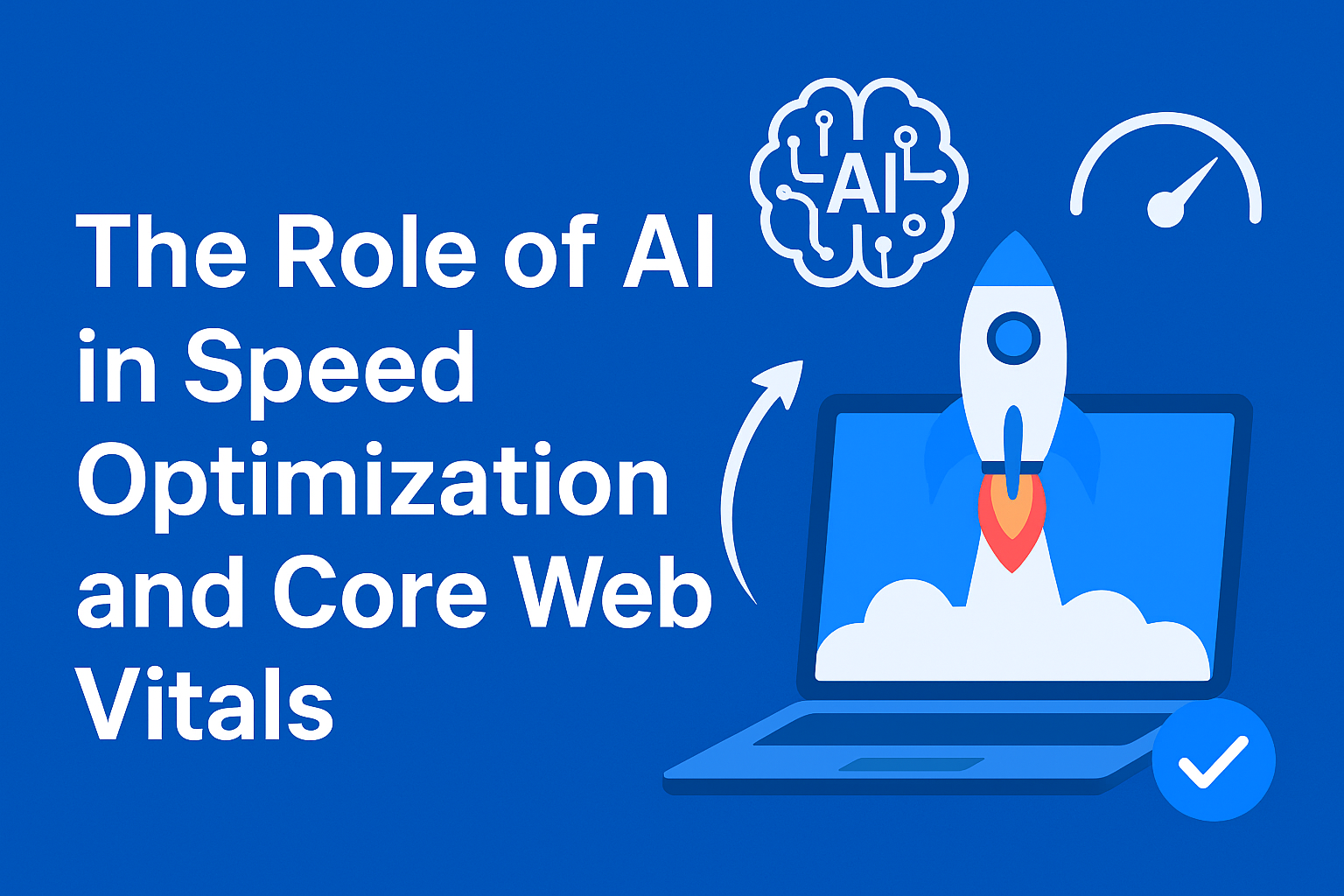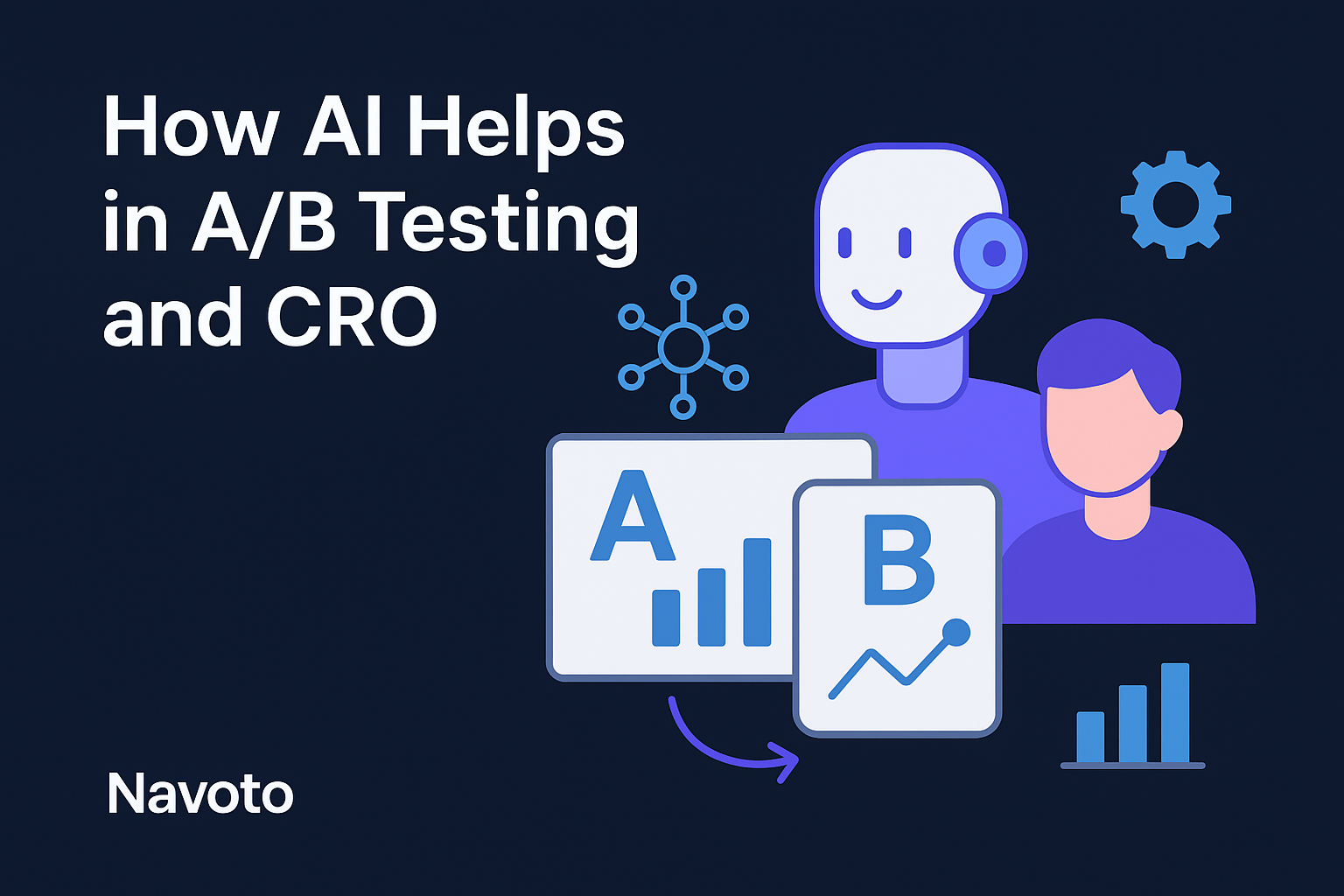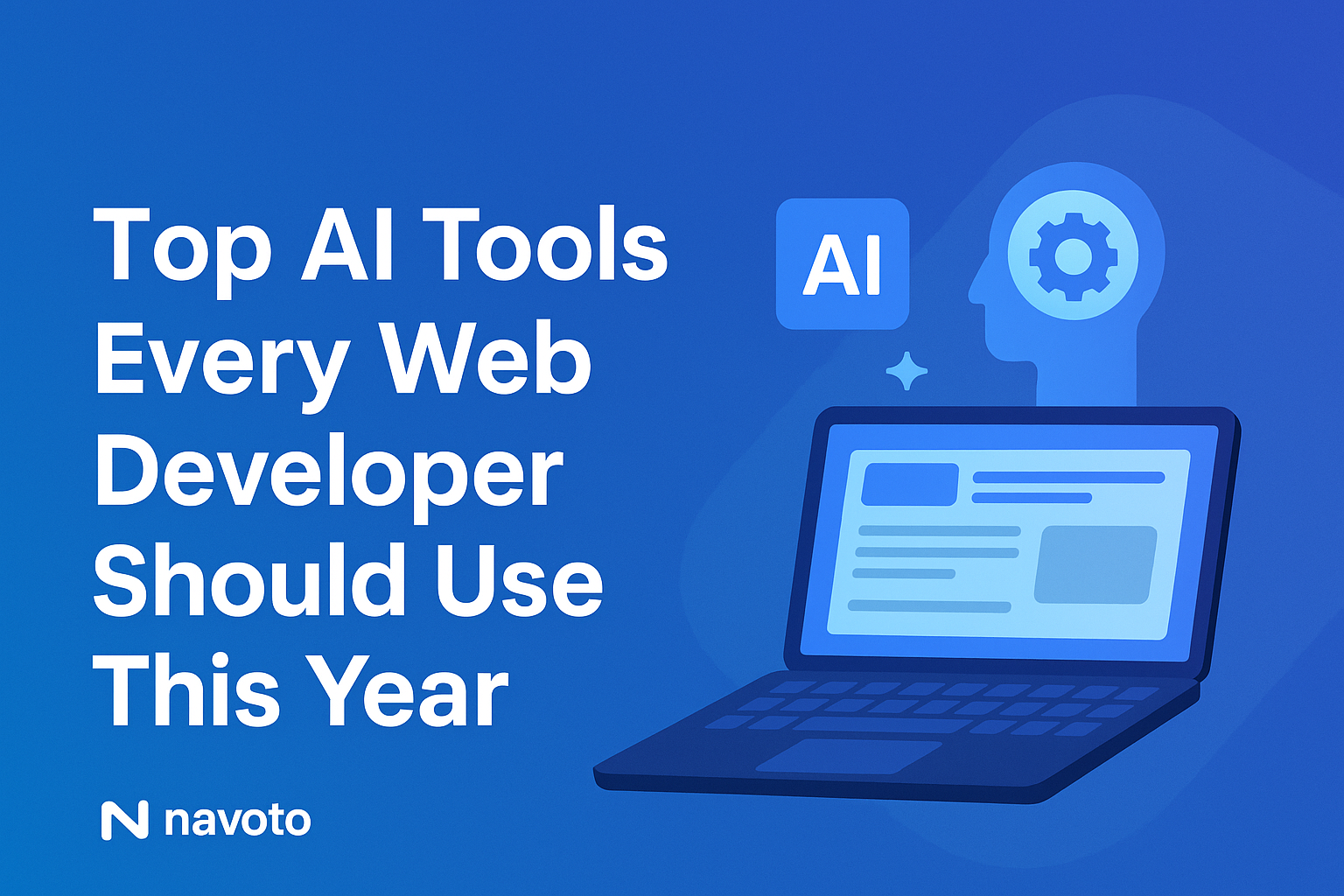🚀 Introduction
In 2025, website speed and Core Web Vitals have become two of the most critical ranking factors in Google’s search algorithm.
A fast-loading, high-performing website not only improves SEO but also boosts conversions and user experience.
However, optimizing performance manually is time-consuming and complex — that’s where Artificial Intelligence (AI) steps in.
AI is changing how developers analyze performance issues, compress assets, monitor Core Web Vitals, and even predict load-time improvements before deployment.
In this blog, we’ll explore how AI is transforming website speed optimization, improving Core Web Vitals metrics, and helping marketers achieve measurable results through better tracking, analytics, and automation.
⚙️ 1. Understanding Core Web Vitals
Before diving into AI’s role, let’s quickly recap what Core Web Vitals are.
Core Web Vitals are a set of metrics introduced by Google to measure real-world user experience on a webpage. They focus on three primary performance areas:
-
LCP (Largest Contentful Paint): Measures loading performance.
-
FID (First Input Delay): Measures interactivity and responsiveness.
-
CLS (Cumulative Layout Shift): Measures visual stability.
A website that scores well on these three metrics ranks higher in search results, reduces bounce rates, and improves conversions.
🤖 2. How AI Transforms Speed Optimization
AI has brought automation, prediction, and personalization to web performance. Traditional tools rely on manual audits and fixed recommendations — AI goes beyond that by analyzing behavior, learning patterns, and automatically implementing improvements.
🔍 a) Predictive Performance Analysis
AI-powered tools like PageSpeed Insights (with machine learning integration) and Cloudflare AI can simulate user journeys and predict how design or script changes will affect loading speed — before publishing.
For example, if you add a new hero banner or animation, AI models can estimate its impact on LCP and recommend optimizations instantly.
⚙️ b) Automated Image & Asset Optimization
AI tools like Cloudinary and TinyPNG AI compress images without losing quality. They automatically choose the best image format (WebP, AVIF, or JPEG XL) and serve them via adaptive CDN routes.
💡 Result: Faster image delivery and better Core Web Vitals performance.
🧠 c) Smart Code Minification and Lazy Loading
AI-based optimizers analyze which parts of a page are most critical for users and delay the rest until interaction occurs.
Tools like NitroPack and AI Web Performance APIs automate:
-
CSS and JS minification
-
Deferred script loading
-
Lazy loading for off-screen content
These smart techniques boost FID and LCP, directly improving page speed and user engagement.
📈 3. AI and Real-Time Monitoring
Traditional analytics tell you how your website performed yesterday — AI tells you how it’s performing right now.
AI-powered monitoring tools integrate directly with Google Analytics 4 (GA4) and Google Tag Manager (GTM) to track Core Web Vitals data in real time.
🧩 Example Setup:
-
GA4: Captures real user metrics (RUM data) for LCP, CLS, and FID.
-
GTM: Fires AI-enhanced event triggers when performance thresholds are exceeded.
-
AI Layer: Analyzes the data and sends actionable alerts, such as:
“CLS increased on mobile homepage due to delayed ad script.”
This proactive approach lets developers fix problems before users experience them — a massive advantage over manual reporting.
🧠 4. AI and CDN Optimization
A Content Delivery Network (CDN) like Cloudflare, Akamai, or Fastly can be powered by AI to intelligently cache, prefetch, and deliver resources.
AI continuously learns:
-
Which assets are requested most frequently
-
Which geographic regions need faster response times
-
How to reroute traffic during high latency
💡 Example:
Cloudflare’s Auto-Optimize AI Engine compresses CSS/JS on the fly and prioritizes content rendering based on user device type — improving LCP by up to 40%.
🧩 5. AI for Predictive SEO and Performance Scoring
AI doesn’t just optimize performance — it also predicts SEO outcomes.
When connected with Search Console and GA4, AI can:
-
Correlate Core Web Vitals with bounce and conversion rates
-
Predict how performance improvements will affect rankings
-
Recommend content or layout adjustments for maximum impact
Tools like Surfer SEO, Frase AI, and MarketMuse now include performance-based ranking signals in their recommendations. This bridges the gap between technical SEO and AI-driven performance tuning.
💬 6. Integrating AI Insights with Meta Ads Tracking
Fast websites lead to better ad performance.
By linking Meta Pixel and GA4 tracking, AI can identify how load speed affects conversion events like “Add to Cart” or “Lead Submission.”
Example flow:
-
Meta Pixel tracks the conversion on a landing page.
-
GA4 captures performance metrics for that same session.
-
AI correlates slow load times with lower conversion probability.
-
The system automatically suggests optimizations to improve ad ROI.
This creates a feedback loop between ad performance, speed, and Core Web Vitals — powered by AI intelligence.
🧠 7. Top AI Tools for Speed & Web Vital Optimization
Here are some must-have AI tools for developers and marketers:
| Tool | Purpose | Key Benefit |
|---|---|---|
| Cloudflare AI | CDN & performance | Smart caching and routing |
| NitroPack AI | Speed optimization | One-click lazy load & minify |
| Google Lighthouse AI Mode | Site audit | Predictive Core Web Vitals report |
| Framer AI | Design performance | Lightweight, auto-optimized sites |
| Surfer SEO + GA4 Integration | SEO + performance | AI links speed with ranking signals |
| ChatGPT | Developer assistant | Writes optimization scripts and GTM tags |
🔍 8. The Future: AI-Powered Core Web Vitals Automation
Imagine a website that automatically optimizes itself — compressing assets, adjusting layout shifts, and minimizing blocking scripts without human input.
That’s where web development is heading.
AI systems will:
-
Continuously analyze page performance
-
Auto-update caching rules
-
Predict traffic surges and scale resources instantly
Developers and marketers will spend less time fixing issues and more time building experiences.
⚡ Conclusion
AI is revolutionizing how we approach speed optimization and Core Web Vitals.
It bridges the gap between performance, SEO, and analytics — helping businesses achieve faster load times, better rankings, and higher conversions.
By combining tools like Cloudflare AI, NitroPack, GA4, and Meta Pixel, you can build a web ecosystem that’s intelligent, efficient, and conversion-ready.


